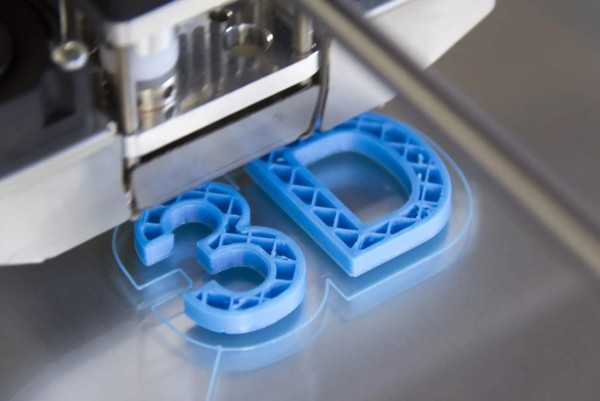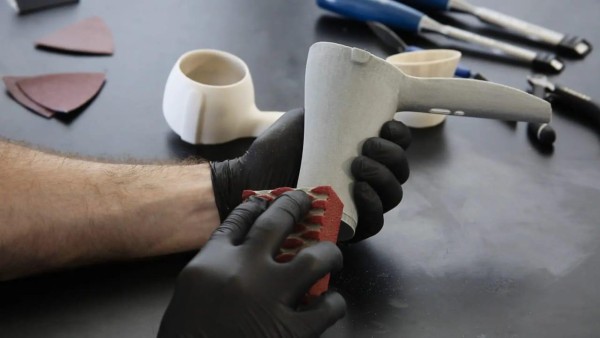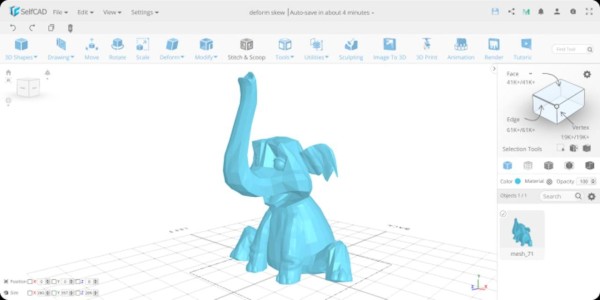Precision printing alone is not enough to improve the visual appeal of 3D-printed models. Typical problems such as uneven texture and printing flaws must be fixed. Due to its ease of usage, PLA is a popular material; however, for a finished appearance, thorough finishing is essential. Different painting methods call for varying levels of detail. To achieve the most possible visual effect, painting PLA prints requires mastery of finishing techniques and color application. Here, we have a detailed guide on painting PLA 3D prints. Read on!

Painting PLA 3D Prints: Image source: interestingfacts.org
Which Are the Main Tools Required for Painting PLA?
- Sandpaper: Used to remove flaws and smooth out rough surfaces in preparation for painting.
- Primer: A bonding agent that is used to smooth out the PLA surface and increase paint adhesion.
- Paintbrushes: A range of sizes of brushes is required for the application of varnish, primer, base coats, and details.
- Acrylic Paints: Water-based acrylic paints work well with PLA prints because of their bright colors, quick drying times, and strong bonding power.
- Paint Palette: Used to mix and thin paint to the right consistency and color.
- Masking tape: It helps to shield some areas from unwelcome paint and produce neat edges.
- Clear Varnish or Sealant: Used as a protective coat on painted surfaces to increase longevity and produce a glossy or matte appearance.
What Are the Types of Paints Used for 3D Printed PLA (Polylactic Acid)?
Painting 3D printed PLA (Polylactic Acid) is a significant way to enrich their appearance. PLA is one of the most common and popular filaments for 3D printing. Also, PLA 3D prints can take various types of paints well.
Here are the different types of paints that can be used for 3D PLA Prints:
- Acrylic Paints: The most common and widely used paint is the acrylic colors. These colors have been used for various materials or surfaces and various purposes. The acrylic paint is water-based and adheres well to PLA. They come in a wide range of colors. With mix and match, you can create some beautiful custom shades. Acrylic paints dry relatively quickly. If you get used to the basic technique of using acrylic colors, they are easy to work with. You can easily find them, and they are affordable. Acrylic colors are water-soluble and can be thinned with water, so anybody can use them. There are different types of acrylic paints with varied pigments and acrylic polymer binders.
- Spray Paints: Spray paints have versatile uses, most preferably used for plastic. It can be applied to PLA surfaces. While applying the spray coat, ensure that you use a primer specifically formulated for such surfaces. This helps the paint adhere better and provides a smoother finish.
Spray paint is the easiest and quickest method to paint and is also readily available in the market. You get even coats and can quickly cover a large surface area. Choose spray paint when you need to save time and energy. Spray paint application is wide and best for all types of 3D prints. It is difficult to obtain the precise coloring or when you need to apply 1 or 2 colors. The more the colors, the more the hassle with spray paint.
The best quality of spray paint is that it gives good dimensional accuracy. It adds color in thin layers with no extra buildup, like hand painting. Spray paint needs a very basic and easy technique of smooth hand movement. Like moving back and forth and from a specific distance. Apply several coats depending on the color, darkness, and finishing. Wait to dry the first coat, and then apply the next coat of spray paint. Also, you need to leave the 3D-painted models for at least 24 hours. Take necessary measures, and use protective equipment while using spray paint.
- Enamel Paints: Enamel paints are solvent-based and can provide a durable finish. They take longer to dry compared to acrylics, but they offer a glossy and robust coating. Enamel paints may require proper ventilation during application due to their fumes. Enamels give a shiny finish, a glass-like feel. On the other hand, enamel paints are much more durable than acrylic paints. These paints must be applied thinner or with harsh chemicals when removed from surfaces. Enamel paint gives a distinct look; you can't replicate its finish with any other paint.
- Oil-Based Paint or Markers: Oil-based paints and oil-based markers are two different application processes that use the same type of paint. So both give quality and good finishing. Working with oil-based paint is like normal paint work. Oil-based markers are user-friendly and convenient for detailed work. In the case of precise and small areas, use a work marker; you don't need any brushes or additional equipment. Add fine details and fine lines to your 3D-printed PLA projects. The oil-based markers are versatile and work well on a variety of surfaces. Oil-based paint might take longer to dry on 3D prints than oil-based markers.
How to Paint PLA 3D Prints?
Before you start painting, you should know that it's not only about paint. You should take care of the 3D-printed model before and after painting. Ensure that a unique finish is provided above the print coat. Consider the following steps:
- Basic cleaning:
As a first step, you just have to clean the 3D print surface. This is also known as the surface preparation for the sanding process.
- Sand the 3D print surface:
Now, according to the hardness and size of the 3D print, you need to perform the sanding process. With less or moderate pressure, use the sandpaper on a 3D-printed model. It is to remove the uneven layer of PLA surface with fine-grit sandpaper to create a rough texture. This texture allows the paint to adhere better. Sanding improves the surface quality of 3D prints.

Sand the 3D print surface: Image Source: manufactur3dmag.com
- Clean the surface:
Once you are done with the sanding process, clean the 3D print surface with isopropyl alcohol or a similar cleaning agent. Remove any oils, debris, or residue.
- Primer:
Apply a plastic primer; it will make sure that there is proper adhesion and a smoother finish. Always follow the paint manufacturer's instructions for optimal results. Experiment on a small area or a test print to check compatibility. When using spray paints designed for plastics on PLA surfaces, use a plastic primer before painting.
- Start with Painting:
Begin with the base coat, applying thin layers until you achieve the desired vibrancy. For prints with multiple colors, use blue painter's tape to mask areas not intended for painting. Add the second color and carefully remove the tape for clean lines. Use a combination of tools for the precise painting. You can use a small paintbrush, toothpick, or dotting tool.
- Sealing the paint:
After the paint dries, seal the print with a clear coat. Use a soft-bristled brush for brush-on sealants to avoid visible brushstrokes, which is especially crucial for matte finishes. Aerosol sealants require the same safety precautions as spray painting. A resin coat is also used to make the 3D print shiny and secure.
The Best 3D Modeling Software: SelfCAD
There are various 3D modeling software available in the market. As for printing the best 3D models, you need to use good quality software tools and also the material. SelfCAD 3D modeling software and slicer are among the best available on the market.

3D Modeling Software: Image source: gdm-catalog-fmapi-prod.imgix.net
SelfCAD is a 3D design software that caters to both beginners and advanced users. The software includes a variety of tools for modeling, sculpting, and texturing. It offers a built-in slicer, which is a tool used to convert 3D models into a format that 3D printers can understand and prepare your 3D models for printing by generating the necessary G-code.
https://www.youtube.com/watch?v=lpf38aMk8d8&t=8s
Also, you can quickly learn how to make a 3D model from the tutorials on the SelfCAD website. They have detailed guides, tutorials, and blogs on everything that you need to know about 3D modeling.
Master the Art of Painting PLA: Elevate Your 3D Prints
Painting is the crucial design step of a 3D print project. It can make or break your 3D project. Fixing common issues like uneven textures and flaws is key to making your PLA prints look polished. With the right techniques and attention to detail, you can turn simple prints into impressive, high-quality models. Now that you have the guide, you're ready to give your 3D prints a professional finish!
